Thai chicken panang curry is a richly flavored Thai curry that you can make in 30 minutes. Try it once and you’ll be hooked. It’s a perfect weekday meal that the entire family will love. It’s the best comfort meal served with steamed rice or jasmine rice.
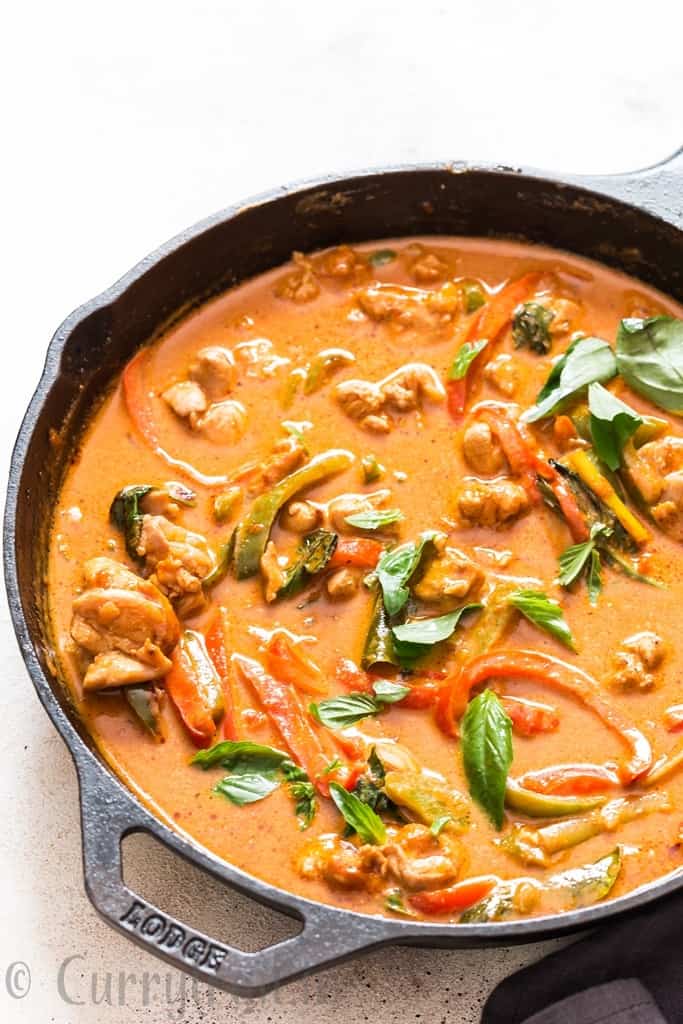
Jump to:
For hearty vegetarian Thai curry try our Thai butternut squash curry or Thai sweet potato curry.
Why does this recipe work?
- It’s the ultimate comfort food.
- It’s richly flavored and has loads of vegetables and protein in it.
- It takes 30 minutes or less to make the curry.
- It’s best served with rice. I love this curry with steamed rice, jasmine rice, and plain rice pilaf.
Ingredients
- Panang curry paste – Use store-bought or homemade Thai curry paste. Panang curry paste is different than regular Thai curry paste. For an authentic taste, buy Panang red curry paste. You can substitute it with regular Thai red curry paste.
- Aromats (onion and garlic) – yellow onion, white onion, or shallots may be used. Use fresh garlic for the best taste. It forms the base of the curry.
- Vegetables – I recommend using a mix of red, and green bell peppers. You can switch it up and use different veggies like zucchini, broccoli, eggplant, sweet potato, celery, or mushrooms.
- Protein – Chicken or beef is recommended. Fish and shrimp can be used if you opt for seafood. Use firm tofu for vegetarians or vegans. Chickpeas would work too.
- Coconut milk – for rich creamy curry use full-fat coconut milk.
- Natural peanut butter – peanut is one of the unique ingredients in this recipe. Use good quality, unsweetened natural peanut butter.
- Coconut oil – dish tastes best with virgin coconut oil.
- Other Thai curry ingredients – ingredients like galangal, lemon grass, and kaffir lime leaves induce strong Thai flavors. If you’re not a big fan of these strong Thai flavors, reduce the amount of these ingredients.
- Fish sauce – you’ll need a dash of fish sauce. It makes the recipe, salty with a strong flavor.
- Nutmeg – another ingredient that is specific to this recipe is nutmeg. Use a dash of nutmeg powder. I skipped nutmeg.
- Palm sugar – use brown sugar if palm sugar is not available.
- Thai basil – add it only in the end, it adds flavor to the curry.
Step-by-step instructions
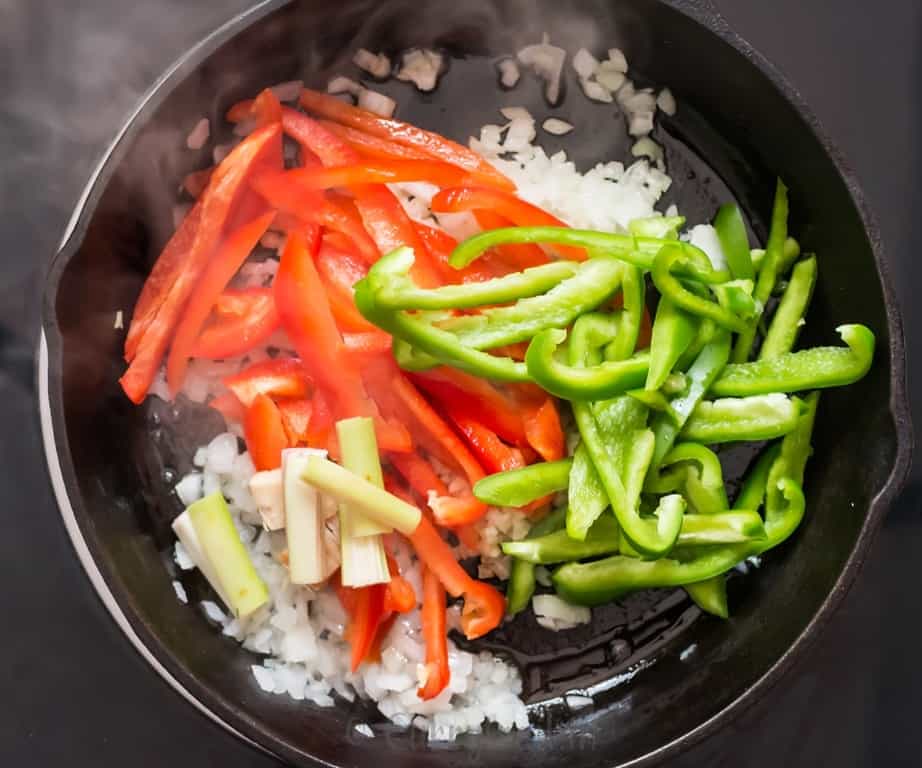
Step 1: Heat coconut oil in a skillet. Sauté finely chopped onions in hot coconut oil until onion is translucent. Add minced garlic and red and green bell peppers. Cook for 2 minutes constantly stirring. Add roughly chopped galangal and lemongrass.
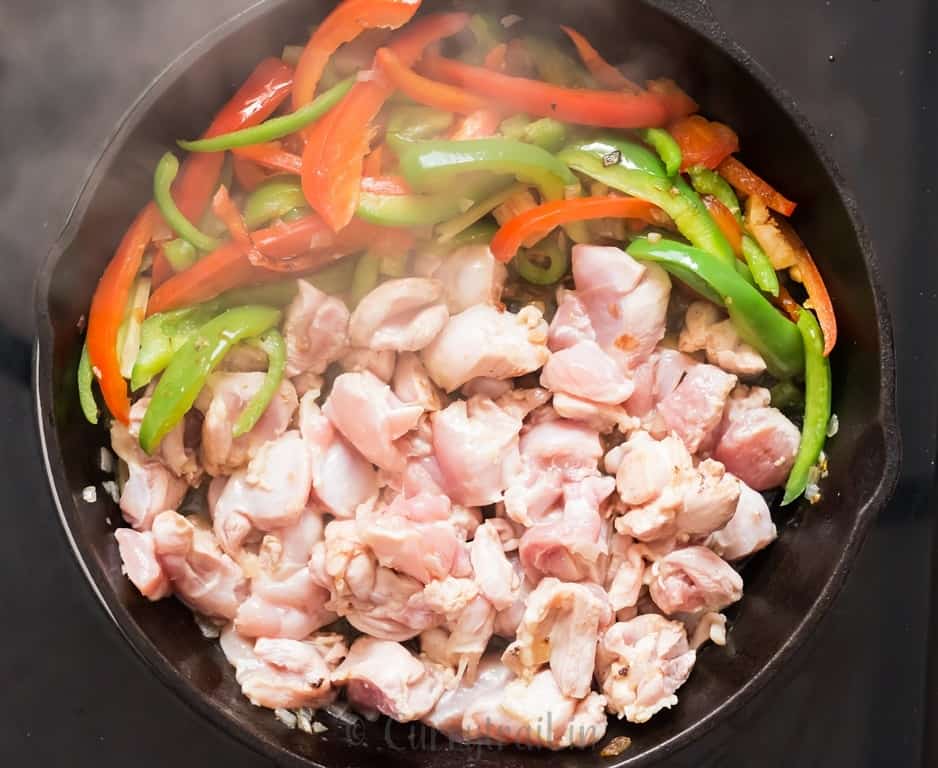
Step 2: Push veggies to one side of the pan. Add cubes of chicken things. Cook until chicken begins to brown.
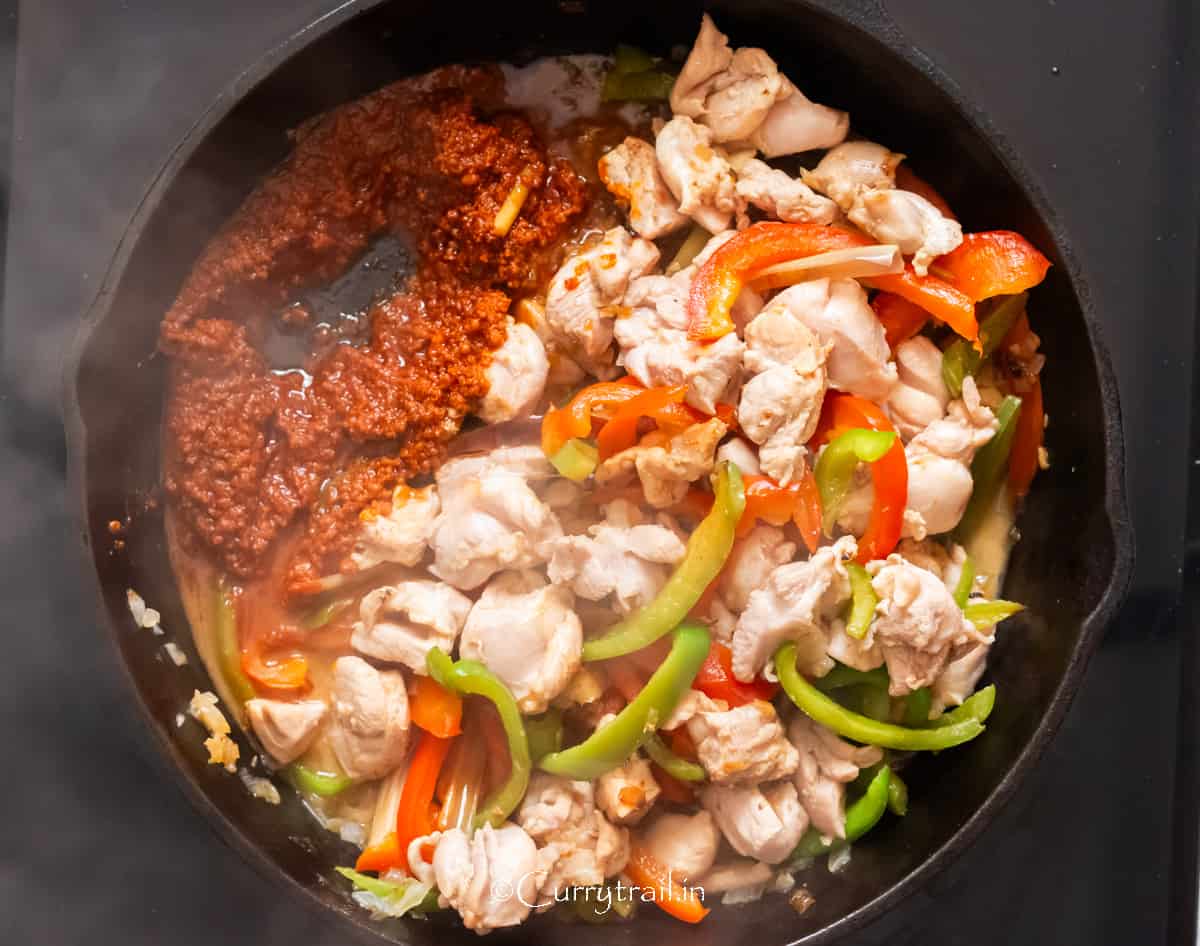
Step 3: Continue cooking it for a minute. Push the mix to one side, and add the paste. Stir the paste and fry it in oil. It’s crucial to cook the paste in oil first.
Note: Do not skip frying curry paste in oil.
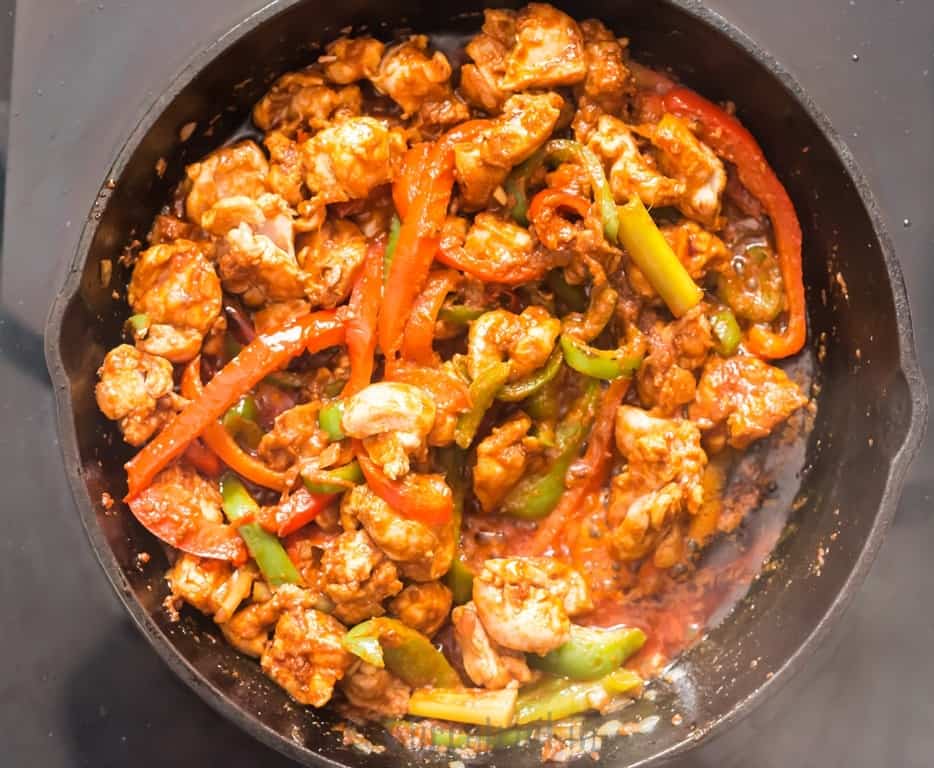
Step 4: Stir frequently until oil is released from the paste and turns aromatic. Mix it with veggies and chicken and cook for a minute.
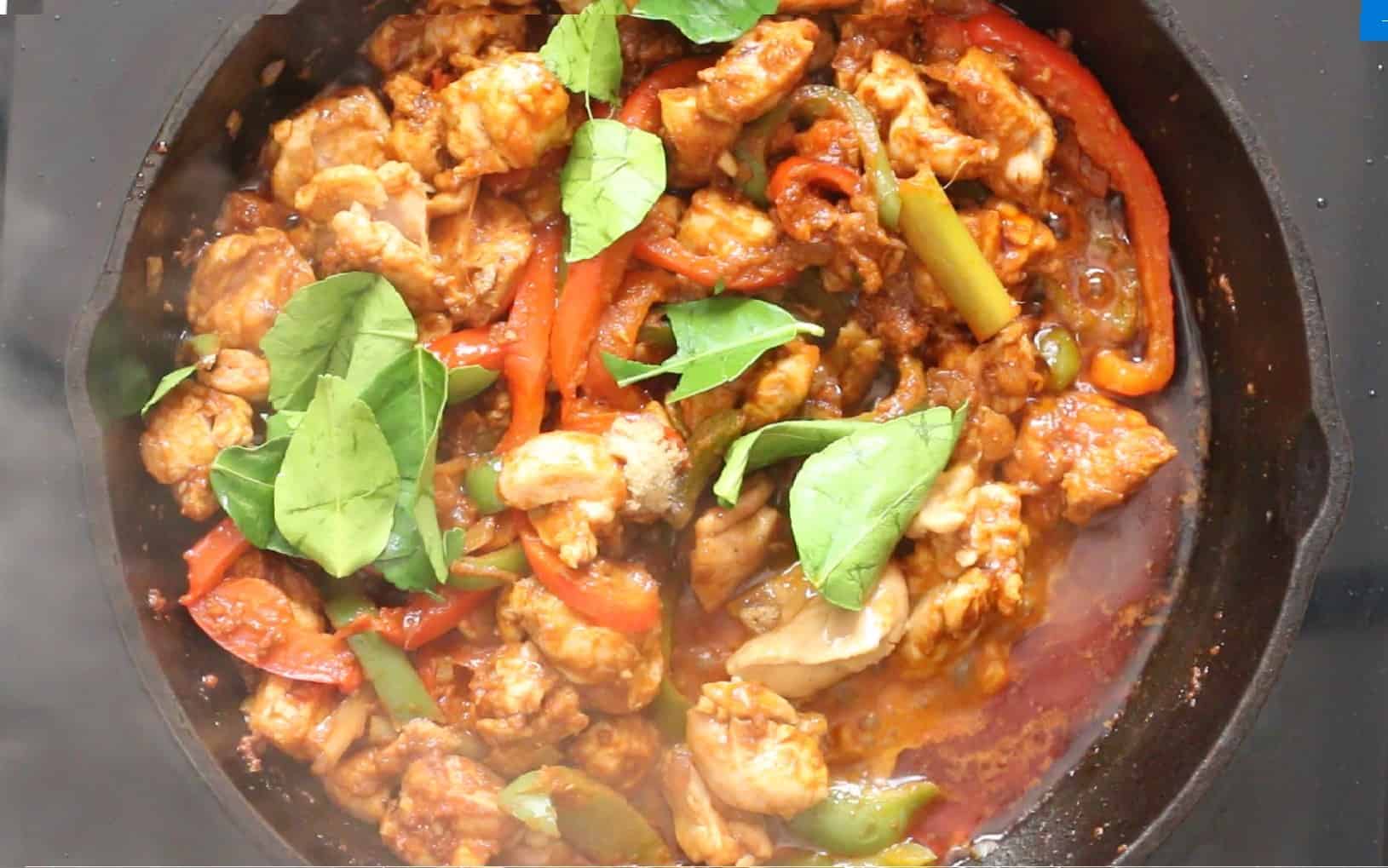
Step 5: Stir in unsweetened peanut butter, fish sauce, and palm sugar. Crush kaffir lime leaves in our palm and add it to the skillet. Cook stirring frequently for 2 minutes.
Note – If you can’t get palm sugar, substitute with brown sugar or jaggery. Crushing kaffir lime leaves helps release its wonderful aromatic oil, making it flavorsome.

Step 6: Simmer flame. Pour in thick coconut milk. Stir well.
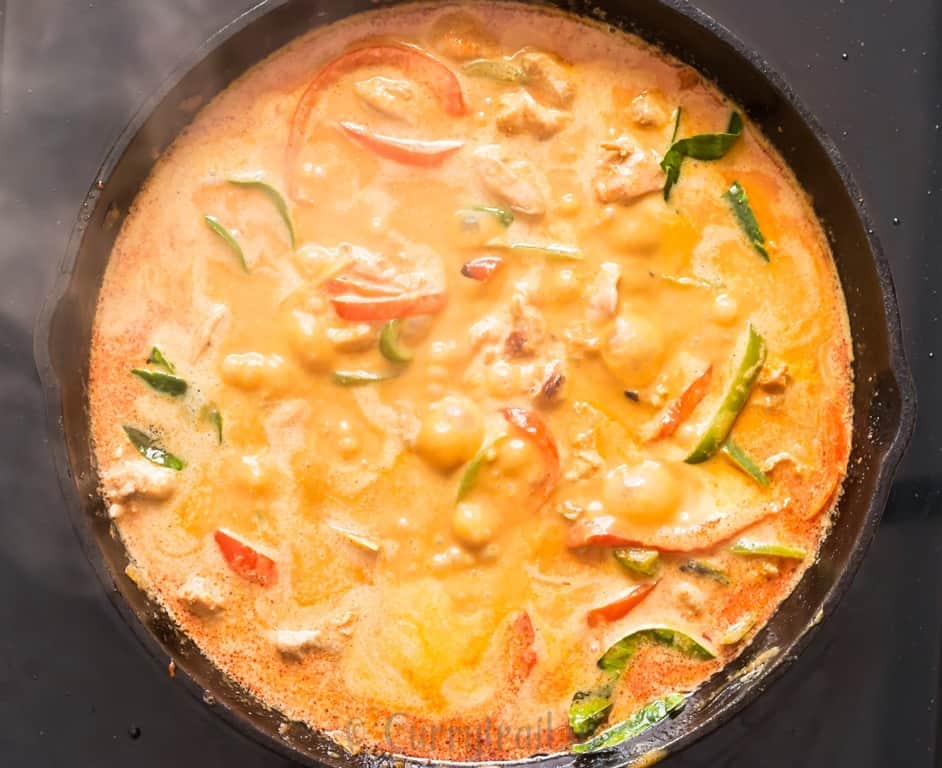
Step 7: Let it simmer and cook for 5 minutes.
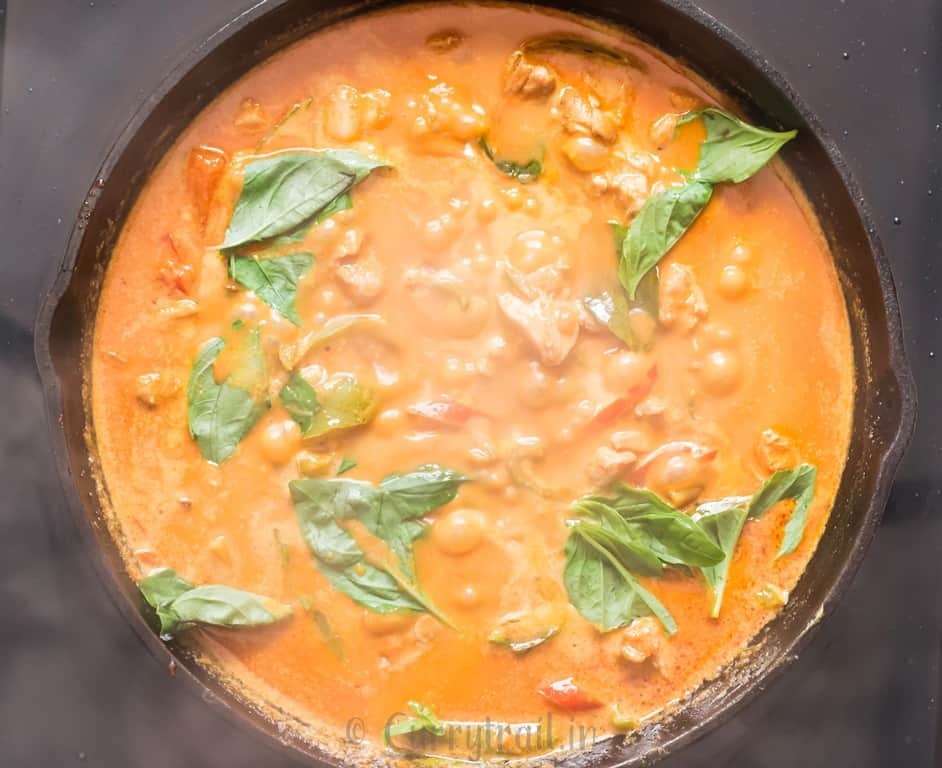
Step 8: Turn off the heat and add Thai basil leaves.
For best taste serve it immediately hot with steamed rice or jasmine rice.
For hearty vegetarian Thai curry try our Thai butternut squash curry or Thai sweet potato curry.
Useful tips
- Fry curry paste – The essential step to make a good curry with great taste is frying the paste until you see the oil separate from the paste.
- Kaffir lime leaves – Crushing kaffir lime leaves before adding to the recipe will release all its aromatic oil to the dish.
- Peanut allergy? Panang paste usually has peanuts. If you are allergic to peanuts, you may want to avoid this curry.
- Fish sauce – adjust as per taste preference. I didn’t add any salt.
- Coconut oil – make the dish taste better. You can substitute with vegetable oil or canola oil, I don’t recommend olive oil.
- Spicier curry – The recipe makes medium spicy curry. If you want to make it spicier, use curry paste that is spicy enough, or use 1 or 2 birds-eye chili in the recipe.
- Palm sugar substitute – If you can’t get palm sugar, substitute with brown sugar or jaggery.
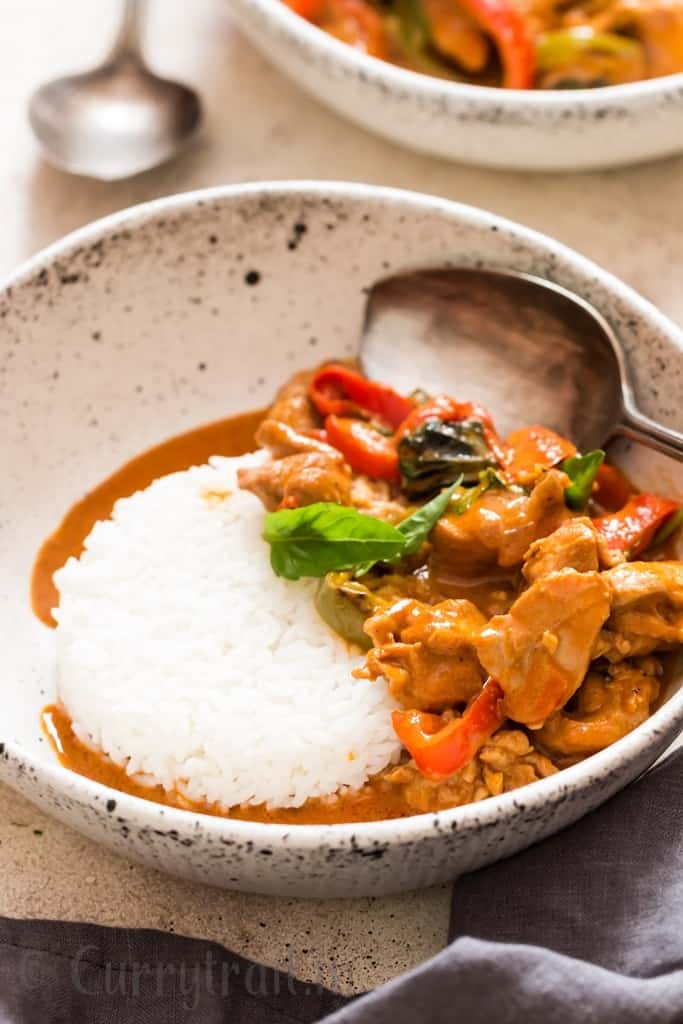
Recipe FAQs
This red curry originates from an island located off the west coast of Malaysia. This curry is richer, spicier, mildly sweet, and creamier.
It’s usually less spicy as the paste is made with milder red chilies compared to Thai curries. Peanut butter and coconut milk make the curry sweeter than other Thai curries.
Panang curry paste is traditionally made from chili peppers (birds eye chilies), galangal, lemongrass, kaffir lime, coriander root, coriander seeds, cumin seeds, garlic, shallot, shrimp paste, salt and peanuts. Grind everything in a mortar and pestle.
Panang paste is more aromatic than compared to red curry paste. It has cumin seeds, coriander seeds, and roasted peanuts which gives it a rich aromatic taste.
The level of spiciness depends on the brand of curry paste you use. Compared to regular Thai curry, this curry has mild spiciness.
Don’t forget to Subscribe to CurryTrail Recipes below to get our newest recipes delivered straight to your inbox.
If you love this recipe, keep in touch, and don’t miss out on any of Currytrail recipes. Follow me on Pinterest, Facebook, and Instagram.
📋The Best Thai Chicken Panang Curry
Ingredients
- 1 ½ lbs chicken thigh boneless, cut into bite size pieces
- 1 white onion finely chopped
- 5 cloves garlic minced
- 1 green bell peppers chopped
- 1 red bell peppers chopped
- ½ inch galangal roughly sliced
- 1 inch lemongrass roughly sliced
- 1 tablespoon coconut oil
- 1 small jar Thai Panang curry paste measured to about 4 ½ tablespoons
- 1 tablespoon unsweetened peanut butter
- 1 teaspoons fish sauce
- 1 pinch nutmeg powder optional
- Salt to taste if required
- 2 teaspoon palm sugar or brown sugar
- 6-8 kaffir lime leave crushed
- 1 can (14 oz) coconut milk
- ¼ cup Thai basil leaves
Instructions
- Heat skillet or deep bottom pan. Add coconut oil and wait until oil melts.
- Sauté finely chopped onions in hot coconut oil until onion is translucent.
- Add roughly chopped galangal, lemon grass.
- Add minced garlic, red and green bell peppers. Cook for 2 minutes constantly stirring.
- Push veggies to one side of the pan. Add washed and cleaned chicken things. Cook until chicken browns a bit and changes colour.
- Mix chicken and veggies together. Continue cooking it for a minute more.
- Again gather chicken veggie mix to one side of the pan. Scoop out Thai Panang curry paste ( or Thai red curry paste) to empty side of pan. Stir the paste and fry it in oil. Wait until oil separates from the paste. Pro-Tip : Do not skip frying curry paste in oil. Flavors cone out and curry turns delicious with this step.
- Stir in unsweetened peanut butter, fish sauce and palm sugar. Nutmeg powder to be added now if using.Take Kaffir lime leaves on your palm and crush it. Add crushed kaffir lime leaves to the pan. Note – If you can’t get palm sugar , substitute with brown sugar or jaggery. Crushing kaffir lime leaves helps release its wonderful aromatic oil, making Panang curry flavorsome.
- Cook stirring regularly for 2 minutes.
- Simmer flame. Pour in thick coconut milk. Give it a good stir.
- Let it cook for 5-7 minutes or until chicken is fully cooked.
- Turn off the flame. Add Thai basil leaves. Stir.
- It’s great when served with steamed jasmine rice. You can also serve with rice noodles.
Video
Notes
- Fry curry paste – The essential step to make a good curry with great taste is frying curry paste until you see the oil separates from the curry paste.
- Kaffir lime leaves – Crushing kaffir lime leaves before adding to the curry will release all its aromatic oil to the curry.
- Peanut allergy? Panang curry paste usually has peanuts. If you are allergic to peanuts, you may want to avoid this curry.
- Fish sauce – adjust as per taste preference. I would skip salt if adding fish sauce.
- Coconut oil – gives curry a better taste. You can substitute with vegetable oil or canola oil, I don’t recommend olive oil.
- Spicier curry – The recipe makes medium spicy curry. If you want to make it spicier, use curry paste that is spicy enough, or use 1 or 2 birds-eye chili in the recipe.
- Palm sugar substitute – If you can’t get palm sugar, substitute with brown sugar or jaggery.
Nutrition
Created by Jyothi Rajesh
Thank you for stopping by.
I’m Jyothi Rajesh (Jo for short) and i’m the founder of the food blog, Curry Trail where I share my culinary Adventures. I live in Bangalore, India. I’m a mom of two beautiful kids. My passion is creating and sharing delicious and easy recipes for the home cook. I have been blogging since 2007 and many of my recipes have appeared in both online and print publications over the years. Learn more about Jyothi Rajesh.

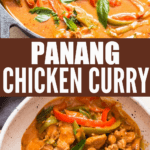
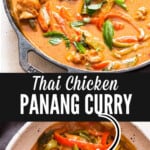

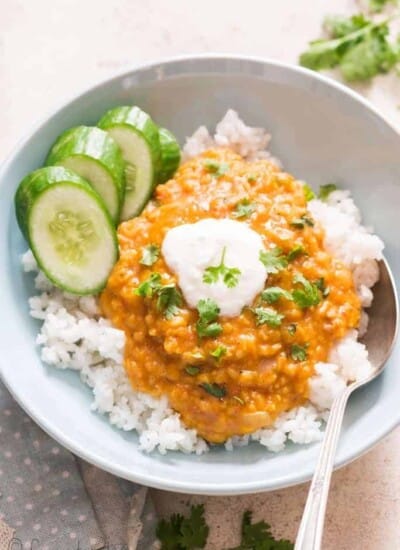
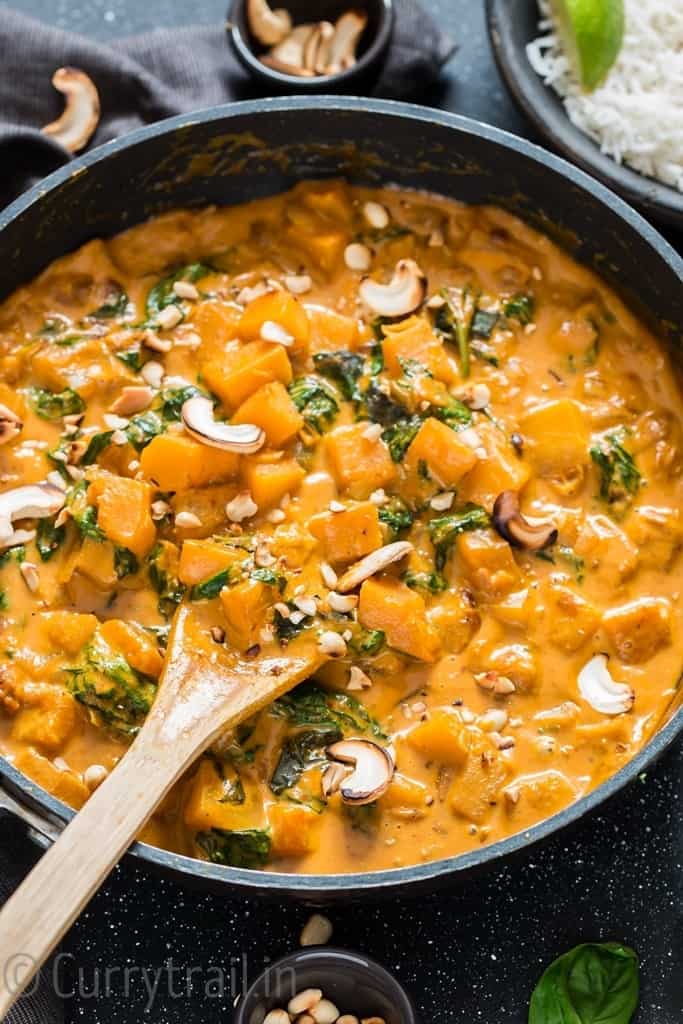
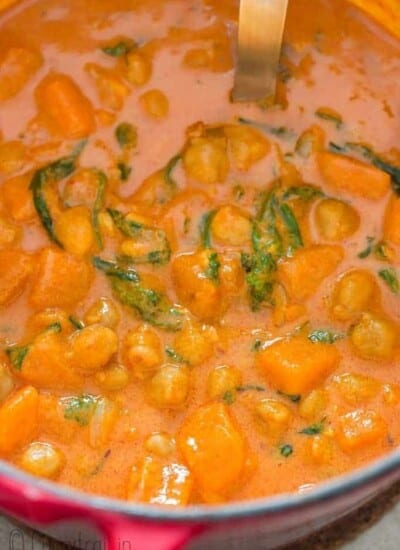
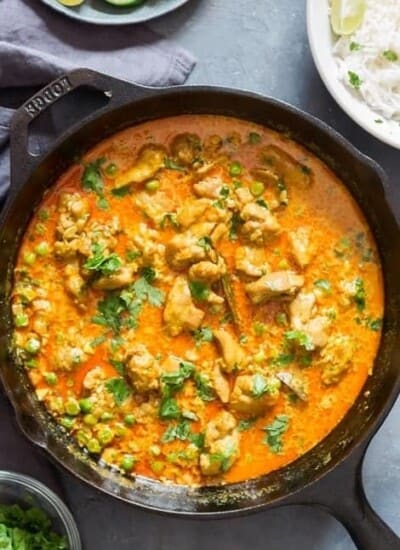
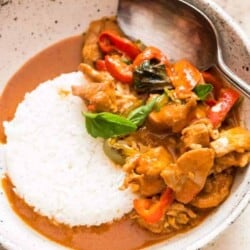
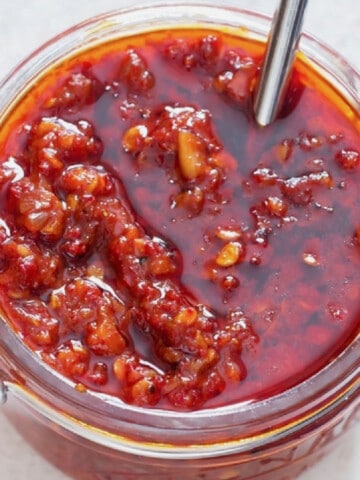
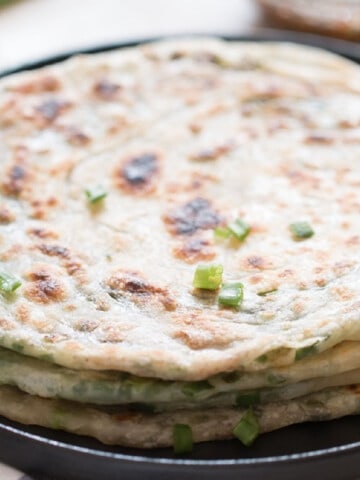
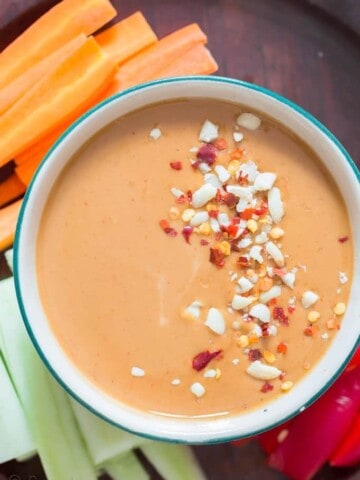
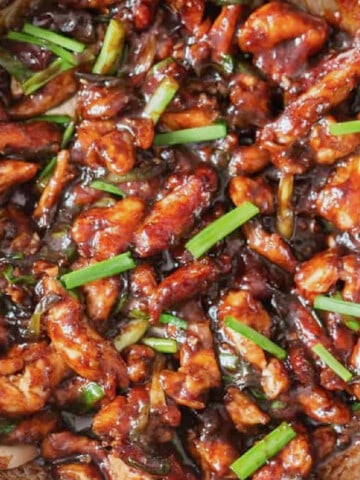








Comments & Reviews
Alex Baker says
I have been following this receipe for 5+ years. Having tried numerous other recipes this is the one that’s authentic takeaway or restaurant quality.
Jyothi Rajesh says
Yay, I’m so glad to hear you love the recipe, Alex. Thank you very much for sharing your feedback!
Fakhra Ahmad says
Made this, everyone said it was 10/10. Excellent
Jyothi Rajesh says
So glad you loved the recipe! Thank you very much for sharing your feedback!
Russ says
Very good dish. I think I will add some shitake mushrooms next time.
Couldn’t find kiffer leaves or Thai Basil, but still very good dish!
Jyothi Rajesh says
Thank you very much, so glad you loved the recipe.
Michelle says
I could’ve eaten the whole thing it was so darn good. The lemongrass and lime leaves give it an intoxicatingly delicious smell and flavor! Better than takeout, hands down.
Jyothi Rajesh says
I’m so glad you loved the recipe, Michelle. Thank you for sharing your feedback.
Ruby says
excellent !!
I didn’t have galangal. and only had dried Thai basil. I doubled the amount of lemongrass and used a sugar substitute to make it keto friendly.
Still came out delicious. Thank you.
Jyothi Rajesh says
I’m so glad you were able to try the recipe and loved it. Thank you for sharing your feedback Ruby!
Ellen says
I have purchase both dehydrated Kaffir Lime Leaves and galangal because it not available in my area fresh. You mention that the dry doesn’t have the same taste. How about I soak them in water first to Hydrate them. The Galangal is hard as a rock, it’s probably the only way to chop it is to soften it. Or should I increase the amount for the recipe?
Jyothi Rajesh says
Yes dried galangal can be soaked in luke warm water to reconstitute it. To substitute you can substitute one teaspoon of dried galangal for 1-inch of the fresh version. You may want to adjust the quantity less or more depending the concentration or depth of flavor the dried galangal has.
Ellen Evars says
I love all your recipes I don’t have Penang Paste. Could I substitute with Red Curry Paste or Yellow curry paste, I have both. Or could I mix the two. I’ve ordered the Penang Paste but it hasn’t arrived and I want to make this Friday. I brought the Dry Galangal so how much should I use?
Jyothi Rajesh says
Oh this recipe uses red Thai Panang curry paste. Yellow curry paste may not give the same flavors.
Kelsie says
Amazing recipe! So so delicious and fail proof every time. It’s my go to recipe for Panang Curry but is also a base for how I make a few other curries. I don’t usually have all the ingredients but it tastes delicious even without a few of the small things.
Jyothi Rajesh says
Thank you very much Kelsie, so glad you love the recipe!
Lindsay says
This recipe was perfect as written. Restaurant quality at home. Delicious!
Jyothi Rajesh says
So glad you loved the recipe Lindsay, thank you
Cherie Krutilek says
If using beef, do follow the same instructions as with the chicken? Thanks 😊
Jyothi Rajesh says
I haven’t tested with beef, but my wild guess would be, yes with cooking time needs to be adjusted.